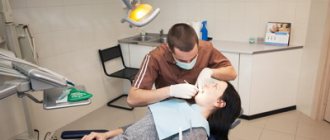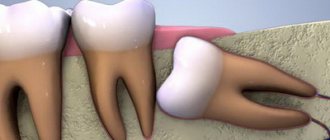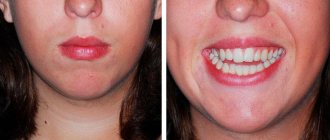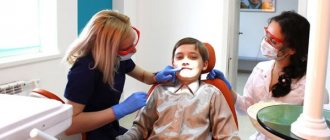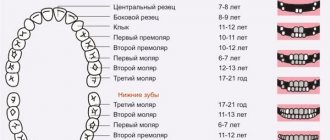Keller's disease is a rare disease accompanied by the development of necrosis, i.e. tissue death of certain bones of the foot, as a result of disruption of their blood supply. There are 2 types of Keller's disease: necrosis of the navicular bone of the foot (type 1) and aseptic necrosis of the heads of the metatarsal bones (type 2). The disease was first described by German radiologist Alban Keller back in 1908, after whom it was named. But often aseptic necrosis of the heads of the metatarsal bones is also called Freiberg’s disease, in honor of the American doctor Alfred Freiberg, who described it in detail in 1914. In any case, regardless of the name, aseptic necrosis of the heads of the metatarsal bones poses a serious threat to a person’s quality of life and his performance . It can cause severe pain in the foot, and subsequently lameness, and therefore requires the earliest possible diagnosis and treatment.
What is Keller's disease type 2 or Freiberg's disease?
Keller's disease type 2 or Freiberg is a fairly rare disease of a non-infectious nature, belonging to the class of osteochondropathy. With it, as a result of blood supply disturbances for one reason or another, the head of the metatarsal bone begins to collapse and die. In 95% of cases, the head of the 2nd or 3rd metatarsal bone is affected, although aseptic necrosis of the rest is not excluded.
Although the disease was identified and described more than 100 years ago, today it still remains poorly understood.
The metatarsals are a group of 5 long tubular bones located in the middle of the foot. They connect the phalanges of the toes to the back of the foot. In this case, the heads of the metatarsal bones form metatarsophalangeal joints with the distal phalanges, ensuring mobility of the toes and maintaining normal support function.
Aseptic necrosis of the head of the 2nd metatarsal bone most often occurs in teenage girls between 10 and 15 years of age. It is at this age that it is most often detected. At the same time, Keller disease type 2 cannot develop for the first time in adults, although it is often diagnosed in cases where treatment appropriate to the situation was not carried out in adolescence. Nevertheless, there are reports of cases of the onset of pathology in people 20-25 years old, although they require more detailed study.
During Keller's disease type 2, there are 4 stages:
- Aseptic necrosis. This stage is characterized by the destruction of the bone beams present inside the bone, which ensure its strength, i.e., the development of local osteoporosis. As a result, the affected metatarsal head loses its density and can no longer withstand the loads placed on it.
- Impression (depressed) fracture - occurs as a result of destruction of part of the bone beams remaining inside the head or newly formed ones. As a result, they break, wedge into each other, and the height of the bone decreases sharply.
- Fragmentation or resorption. Changes occurring in the metatarsal bone lead to the formation of osteoclasts (special cells that resolve damaged bone beams). This leads to a decrease in the size of the head, up to its almost complete resorption.
- Reparation and consolidation. The body tries to eliminate the problems that have arisen, trying to rebuild the lost bone. As a result, the head of the metatarsal bone is gradually restored, but this often occurs with disturbances, since it is severely deformed due to pathological fractures and defragmentation, and the repair process itself requires high-quality blood supply, which is not observed in the absence of treatment for Keller’s disease.
If untreated, aseptic necrosis of the head of the 2nd metatarsal bone leads to the development of flat feet, lameness, and ultimately a violation of the congruence of the articular surfaces, i.e., to arthrosis, and in particular to deforming osteoarthritis. This disease is characterized by the destruction of the cartilage covering the head of the metatarsal bone. Subsequently, this leads to pronounced changes in the structure of the bone and the metatarsophalangeal joint it forms, which causes severe pain during movements, limited mobility of the finger up to its complete immobilization and impaired support of the foot. One of the most severe complications of the pathology is the melting of the small bones of the foot.
Aseptic necrosis of the head of the 2nd metatarsal bone imposes restrictions on a teenager’s choice of profession and the ability to engage in desired sports.
Impressions
The impression is a reverse imprint of the surface of the soft and hard tissues of the oral cavity, which are located in the area of the prosthetic bed.
Their implementation contributes to the production of diagnostic and working models, which serve as the basis for casting prosthetic structures.
There are several types of prints.
Anatomical
It is removed using standard impression trays and a large amount of dental plaster. Has high edges.
Functional tests are not used in this case, as a result of which the condition of the tissues bordering the prosthetic bed is not taken into account.
Functional
To make this type of impression, a personal spoon and special functional tests are used, with the help of which the mobility of the folds of the mucous membrane is reflected.
The edges of the impression are slightly lower than those of the previous type, and the border of the manufactured prosthesis covers the mucous membrane by no more than 2 mm.
Based on pressure on the oral mucosa, functional impressions are divided into three types:
- unloading – removed using a plaster mass using minimal pressure on the mucous membrane;
- compression - used when the mucous membrane is highly pliable, and is performed under pressure using silicone, gypsum or thermoplastic mass;
- combined - allow you to compress areas of the mucosa with high compliance, without overloading areas with low compliance.
Reasons for development
Since the disease is rare, the exact causes of its development are still unknown. The vast majority of experts agree that it is the result of poor circulation in the area of the metatarsal heads. This may be a consequence of impaired arterial patency or, conversely, venous outflow.
This is the result of a huge number of factors of quite different nature:
- foot injuries, including bruises, dislocations, fractures;
- frequent and prolonged wearing of narrow shoes, as well as high heels;
- congenital individual characteristics of blood supply to the feet;
- flat feet of any kind;
- angiopathy resulting from decompensated diabetes mellitus or other diseases;
- metabolic disorders, in particular hypothyroidism, rickets.
It is also assumed that genetic predisposition and impaired biomechanics of the foot play an important role in the development of aseptic necrosis of the head of the 2nd metatarsal bone. The last factor is given increasing importance in the development of a variety of foot pathologies, since studies of the influence of the biomechanics of movements on the state of the musculoskeletal system show that any deviations from the norm over time lead to changes in the anatomy and the development of corresponding disorders.
Research shows that most often aseptic necrosis of the head of the 2nd metatarsal bone develops in people whose 2nd metatarsal bone is longer than the 1st, as this contributes to an increase in the load on it and microtraumas.
Mucous membrane of the prosthetic bed
During preparation for prosthetic replacement of a toothless jaw, in addition to its type, specialists pay attention to the characteristics of the mucous membrane located in the prosthetic bed.
There are three main types of mucous membrane:
- Normal has moderate pliability and a high degree of moisture. The color of the mucous membrane is light pink. This option is optimal for prosthetics.
- Hypertrophied has increased friability and a high content of intermediate substances. It is characterized by a good degree of moisture, however, due to increased compliance, mobility of the fixed prosthesis is often observed.
- Atrophied - has a high density and a low degree of moisture. The color is usually whitish. On the maxillary process, the mucous membrane is attached to the periosteum. This option is the most unsuitable for prosthetics.
Symptoms
The main symptoms of Keller disease type 2 are:
- pain in the foot in the projection of the affected head of the metatarsal bone (usually the 2nd, i.e., next after the big toe);
- swelling at the base of the second toe;
- lameness that occurs after prolonged walking;
- decreased range of motion of the 2nd toe;
- shortening of the 2nd finger (sometimes observed in the later stages of the disease).
Pain at the base of the 2nd toe tends to increase in intensity after physical activity, walking or pressing and goes away with rest. Initially they are weak, but over time they intensify and become permanent, not going away after rest. And in the final stages they can lead to lameness or even significant difficulty in movement. With aseptic necrosis of the head of the 2nd metatarsal bone, pain can be provoked by standing on tiptoes, walking on a bumpy surface barefoot or wearing shoes with too thin soles, i.e. when pressure is applied to the affected bone.
During the course of the disease, periods of remission and exacerbation are distinguished, and the latter can last from several months to several years. On average, Keller's disease lasts 2-3 years, after which the symptoms begin to gradually subside. But if treatment appropriate to the situation has not been carried out and changes have occurred in the structure and shape of the head of the metatarsal bone, the pain will return over time and will increase.
Often, aseptic necrosis of the head of the 2nd metatarsal bone is observed simultaneously on two feet.
Doynikov classification
The scientist's classification is based on the unevenness of atrophy. This classification system is very similar to the classifier that Schroeder proposed to use.
Doynikov identified 5 features of the classification:
- Both jaws have ridges that are pronounced and also have alveolar processes. The mucous membrane is very pliable, and it covers the palate evenly.
- The jaw mounds have an average degree of destructiveness. In this case, the average and depth of the sky.
- There is no alveolar segment and process. The palatal floor is quite flat.
- Only in front there is an alveolar process, and the lateral areas have significant atrophy.
- The alveolar ridge is very noticeable in the lateral parts, and in the front there is severe atrophy.
This classification is very convenient for the doctor because a large number of cases are covered. But specialists working in our time use all types of classifications in their work.
Diagnostics
If signs of aseptic necrosis of the head of the 2nd metatarsal bone occur, patients should consult an orthopedist. The doctor begins the appointment by interviewing the patient and finding out the nature of the complaints about the state of health and the characteristics of work. After this, he conducts a thorough examination of the foot, palpating the area of the affected bone. In this case, the orthopedist may detect a characteristic compaction of the head of the metatarsal bone, which will allow him to assume the presence of aseptic necrosis. To confirm the diagnosis, the following must be prescribed:
- blood tests;
- X-ray of the foot (the height of the head of the metatarsal bone, its structure, shape, condition of the joint space, etc. are assessed);
- Ultrasound of the metatarsophalangeal joints (the shape of the head of the metatarsal bone, its structure, the condition of the hyaline cartilage covering it, the presence of fluid and foreign inclusions in the articular cavity, features of the surrounding soft tissues are assessed).
If questionable results are obtained, the doctor may recommend an additional CT or MRI of the foot. These modern diagnostic methods make it possible to detect the slightest changes in the condition of bones and soft tissues. This makes it possible to detect the disease at the earliest stages of development.
Classification according to Courland
There is also the case that jaws are separated using the Kurlyandsky method. He applied his classification based on the reduction in bone tissue, but also due to the changes that occurred in the place where the muscles are attached. The scientist identified 5 types of atrophy of the lower jaw.
- In the first case, patients are identified whose process protrudes further than the place where the muscles are attached.
- The location of the alveolar process at the same level together with the place of muscle attachment.
- Atrophy of parts that are lower than the places where the muscles are attached.
- The bone tissue becomes thinner where the chewing teeth were (in the lateral area).
- Damage to the tissues of the places where the front teeth were present.
Treatment
Keller's disease has a very favorable prognosis, especially with early diagnosis and treatment. In such situations, patients have every chance to get rid of excruciating pain in the foot and the need to limit physical activity.
Moreover, the nature of the treatment of the pathology largely depends on its stage, the presence of complications and the age of the patient. If in the early stages of development conservative therapy is sufficient, then in advanced cases surgical intervention may be required.
Conservative treatment:
- Immobilization of the foot with a plaster cast applied in the form of a boot for 4-6 weeks. In particularly difficult cases, immobilization can be extended to 12 weeks. Crutches are used to move around during this period of time.
- Wearing orthopedic insoles. They contribute to the correct distribution of the load on the foot and the elimination of disturbances in the biomechanics of movements. Their use eliminates the symptoms of the disease and sharply reduces the likelihood of complications. But for insoles to work effectively, they must be made individually for a specific patient.
- Drug treatment, which is mainly aimed at eliminating the symptoms that bother the patient, especially pain due to taking NSAIDs, and improving the course of metabolic processes in the foot. Therefore, additional drugs are prescribed that activate calcium metabolism and improve peripheral blood circulation. In this way, attempts are made to influence the causes of the disease.
- Physiotherapy, which involves sessions of therapeutic massage, magnetic therapy, electrophoresis, iontophoresis, laser, shock wave therapy, foot baths, etc. These procedures are aimed at improving blood circulation in the feet, eliminating the inflammatory process and reducing pain. Physiotherapy gives good results in the fight against Keller's disease.
- Exercise therapy is a set of exercises individually developed for a specific patient that will help improve local blood circulation, increase the range of motion of the metatarsophalangeal joint, strengthen the muscles of the feet and prevent the development of flat feet.
All patients are advised to avoid tight shoes that put too much pressure on the foot and have high heels. This is due to the fact that it contributes to the occurrence of circulatory disorders in the foot and greatly overloads its anterior section, which leads to an increased risk of microtrauma to bone structures. Preference should be given to orthopedic shoes or at least with an extended leading edge and a stable wide heel up to 3 cm high. Until Keller's disease type 2 is completely cured, it is recommended to limit physical activity and provide the foot with the greatest possible rest. Therefore, it is recommended to avoid jumping, running, and long walking.
Manifestations of bone atrophy
The patient himself, as a rule, does not notice the initial manifestations of jaw atrophy. He encounters this pathology only when the question of dental prosthetics arises.
Classification of jaw atrophy
The most widely used classifications are Schroeder for the upper edentulous jaw and Keller for the lower edentulous jaw. Schroeder distinguishes three types of upper edentulous jaw:
- The first type is characterized by a high alveolar process, which is evenly covered with a dense mucous membrane, well-defined puffs, a deep palate, and the absence or weakly defined palatine ridge (torus).
- The second type is distinguished by an average degree of atrophy of the alveolar process, mildly expressed tubercles, average depth of the palate, and a pronounced torus.
- The third type is the complete absence of the alveolar process, sharply reduced dimensions of the body of the upper jaw, poorly developed alveolar tubercles, a flat palate, and a wide torus. In terms of prosthetics, the first type of toothless upper jaws is most favorable.
Keller distinguishes four types of edentulous mandibles:
- The first type is a jaw with a clearly defined alveolar part, the transitional fold is located far from the alveolar ridge.
- The second type is a uniform, sharp atrophy of the alveolar part, the mobile mucous membrane is located almost at the level of the alveolar ridge.
- The third type - the alveolar part is well defined in the area of the anterior teeth and sharply atrophied in the chewing area.
- The fourth type - the alveolar part is sharply atrophied in the area of the anterior teeth and is well expressed in the chewing area.
With regard to dental prosthetics, the most favorable are the first and third types of toothless mandibles.
Modern techniques of bone grafting and plastic surgery create conditions for prosthetics and dental implantation in cases of existing bone tissue atrophy
